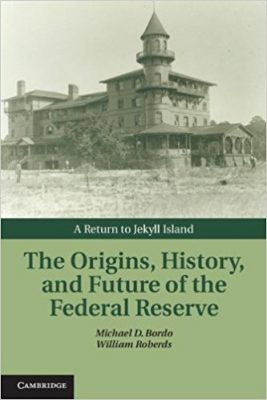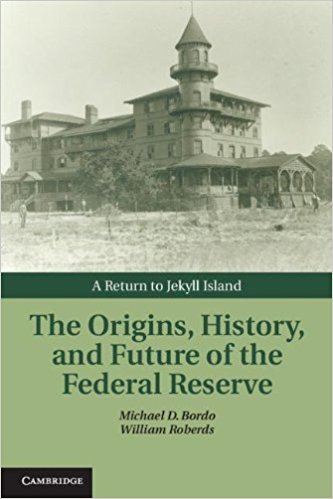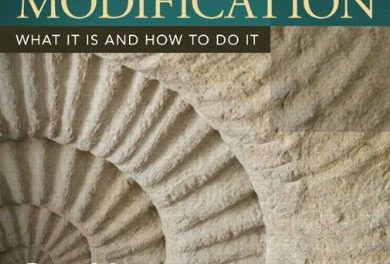 Editors: Michael D. Bordo and William Roberds
Editors: Michael D. Bordo and William Roberds
Publisher: Cambridge University Press – 431 pages
Book Review by: Sonu Chandiram
In October 1907, the New York Stock Exchange index fell almost 50 percent from its peak in the previous year. This massive and deep plunge was called the Panic of 1907. There were numerous runs on banks and trust companies during the three-week period beginning in mid-October. That this steep drop in stock prices happened during a time of economic recession made it even worse.
Runs on the banks depleted their money supplies, and the Panic of 1907 eventually spread throughout the nation. Many state and local banks (and as a consequence, companies) were forced to declare bankruptcy due to their inability to pay debts and operating expenses. What exacerbated the panic was that the runs on the banks caused a drastic reduction in liquidity.
A worthwhile event to note during this liquidity crisis (and what some financial historians have stated was its cause) was a failed attempt to corner the market on the stock of the United Copper Company (UCC) by Otto Heinze, brother of the major UCC shareholder Augustus Heinze.
When this bid failed, banks that had lent money to those who were trying to corner the stock of UCC suffered runs that later spread to affiliated banks and trusts, leading to the downfall of the Knickerbocker Trust Company, New York City’s third largest trust. So the Panic of 1907 has also been termed the Knickerbocker Crisis.
One of the reasons that led to the creation of the Federal Reserve was the Panic of 1907. This book explores the historical background and the events prior to the establishment of this institution that influences our financial lives today.
One of those more significant events was the passage in 1908 in Congress of the Aldrich-Vreeland Act that established a National Monetary Commission, and proposed possible designs for a central bank. The sponsors were Republican Senator Nelson Aldrich of Rhode Island and Republican Representative Edward Vreeland of New York. It was passed by the Senate on May 30, 1908, with 43 Republicans in favor, and five Republicans joining 17 Democrats opposed.
President Theodore Roosevelt signed it into law that same night.
The editors Michael D. Bordo and William Roberds tell their intriguing and colorful story behind the creation of the Federal Reserve in eight chapters we list below:
Introduction
- “To Establish a More Effective Supervision of Banking”: How the Birth of the Fed Altered Bank Supervision
- The Promise and Performance of the Federal Reserve as Lender of Last Resort, 1914-1933
- Where It All Began: Lender of Last Resort at the Bank of England Monitoring During the Overend-Gurney Panic of 1866
- Volatile Times and Persistent Conceptual Errors: U.S. Monetary Policy, 1914-1951
- Government Policy, Credit Markets, and Economic Activity
- Policy Debates of the Federal Open Market Committee, 1993-2002
- Two Models of Land Overvaluation and Their Implications
- Panel Discussion: November 6, 2010
Index
About a hundred years after the Federal Reserve came into being, a conference was held on November 5 and 6, 2010, at the same location, the Jekyl Island Club (now a hotel) where the 1910 meeting was held, where official talks first began about establishing a financial regulatory institution – a ‘central bank’ – that would prevent future stock market crashes.
The Federal Reserve was established by the Federal Reserve Act of 1912 which was finally passed by the U.S. Congress, after much debate, on December 23, 1913, then signed into law by President Woodrow Wilson. The Act’s purpose was “to provide the nation with a safer, more flexible, and more stable monetary and financial system.”
This book is based on the talks given by speakers and discussions held at the 2010 conference, a joint project of Rutgers University and the Federal Reserve Bank of Atlanta, that examined the Federal Reserve’s near-100-year track record, and in the context of the vision of its founders.
The presentations at that conference included eight academic papers and a concluding panel discussion by current and past Federal Reserve officials. The methodology of the presented papers included both economic history and current macroeconomic conditions.
One of the most important institutions in the United States is the Federal Reserve. While there is ongoing controversy regarding its control of and power over people’s financial lives, many will say that it provides some stability in our monetary system, particularly keeping inflation in check and keeping the United States currency one of the strongest in the world.
It makes sense then to know the history of the Federal Reserve, which has played a key role in the United States’ financial stability and strength. The editors of this book Michael D. Bordo and William Roberds have done an outstanding job in providing that important historical knowledge about this key institution.
Editors:
Michael D. Bordo is professor of economics and director of the Center for Monetary and Financial History at Rutgers University in New Brunswick, New Jersey.
William Roberds is a research economist and policy adviser with the Federal Reserve Bank of Atlanta in Atlanta, Georgia.







